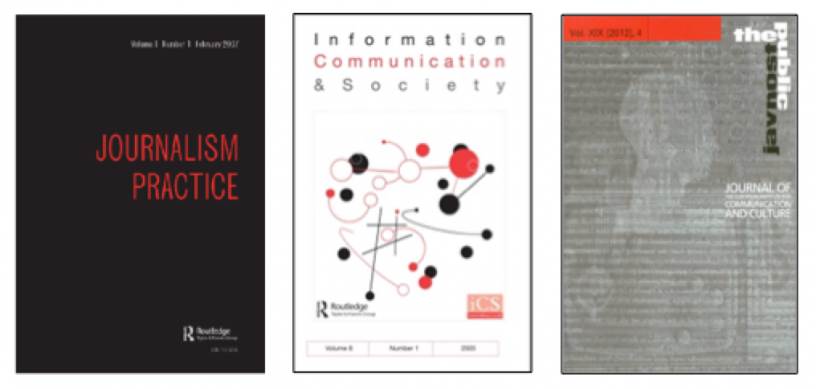Plenty of time has passed since my last post here. I have been keeping busy – leaving my native Sweden and taking up a three-year position as a postdoctoral fellow at the university of Oslo, preceded by functioning as a guest researcher at that same institution. Meanwhile, I’m pleased to announce that a few research papers I’ve recently been involved in have been accepted for publication in various outlets. Some of the publishers involved agree for me to disseminate a certain amount of free pdf:s of these papers through their “e-prints” systems. As such, if any of the following catches your interest, drop me a line and I can probably set you up – at least until the imposed limit of free pdf:s is reached.
To begin with, a solo effort on my behalf, “Staying in or going out? Assessing the linking practices of Swedish online newspapers”, will be published in Journalism Practice sometime later this year. While the title hopefully gives away the theme of the paper, the abstract should provide more information for those of you who might be interested:
As journalism has moved from offline to online, a multitude of studies have gauged how media practitioners have employed the features made available by the internet. One such area of study has been the uses of hyperlinks. This study attempts to move beyond the technological or descriptive accounts often found when dealing with how journalists use links, by presenting an analysis of what aspects pertaining to newspaper website operation appear to have influence over journalistic use of different types of hyperlinks. The focus is placed on Sweden, a country which could be seen as a “hotbed” for innovative practices, given its consistently high scores for newspaper readership and internet use. Specifically, statistical analyses are employed on 3869 links gathered from Swedish online newspapers across a six-month period. Results indicate that while few external links are used, reaching outside the online realm of the specific newspaper, these particular links are almost exclusively found embedded in the journalistic text. Links leading to internal sources are more abundant, especially in the automatically generated thematically based sidebars often found in conjunction with online news items. Results also indicate slight differences regarding linking practices between tabloids and broadsheets, and between news of different origin. In closing, the paper suggests that while linking practices have certainly evolved during the short history of online journalism, we are mostly seeing what could be labeled an automated approach to employing hyperlinks.
Moreover, my ongoing collaborations with Hallvard Moe at the University of Bergen has seen two recent publications. First, “Untangling a Complex Media System. A Comparative Study of Twitter Linking Practices during Three Scandinavian Election Campaigns” builds on data collected for more straighforward Political Communication research. For this paper, though, we look at what sources Twitter users link to when discussing politics with each other. The paper is scheduled for publication in Information, Communication & Society, and the abstract reads as follows:
This article provides empirical insights into how one online service – Twitter – was used for political purposes during three separate election campaigns in Sweden, Denmark and Norway, specifically how Twitter users, with hyperlinks, connect with other channels for political communication. Methodologically, the study employs three large sets of data on Twitter use tagged as relevant for each of the election campaigns, covering a one-month period. The approach allows for an untangling of the complex interconnections between novel online services, mainstream media, official political party websites, public information, individual blogs and social network sites. By moving beyond a study merely of the type of websites linked to, to also include classification of the actors publishing the content linked to, the article provides insights into the actual use by politicians, interest groups as well as grassroots activists of diverse Web genres.
Second, in another co-authored effort, our analysis of Twitter use during the 2011 Danish national election was recently accepted for publication by the editors of Javnost – The Public. While the paper is methodologically reminiscent of our previous work on Twitter use during elections, we try here to provide more of a theoretical framework for interpretation of our results. The paper is not yet available online, but the abstract reads accordingly:
The uses of the popular microblogging service Twitter for political purposes have been discussed by scholars and political pundits alike. While suggestions have been made that the conversational aspects of the microblog could serve to instigate online deliberation between equals, rather few studies have investigated such claims empirically. This paper presents such an empirical study, based on a large-scale data set of tweets concerning the 2011 Danish parliamentary election. By combining state-of-the-art data collection and analysis techniques with theoretically informed matters for discussion, we provide an assessment of political Twitter activity among high-end users of the microblog during a one-month period leading up to the election. Identifying a series of user types, findings indicate that while the bulk of the studied activity bares characteristics of a representative public sphere, traces of a participatory public sphere were also discerned.
